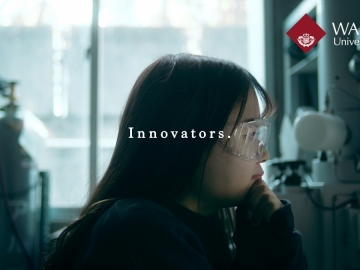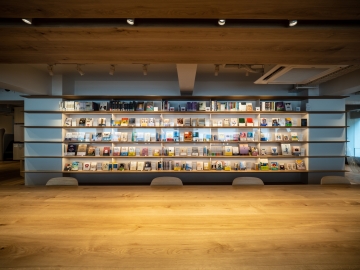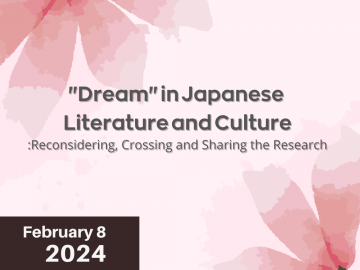Professor Hirokazu Toeda, scholar of modern Japanese literature
School of Culture, Media and Society, Faculty of Letters, Arts and Sciences
Part 1: The City within a City – Ginza in Japanese literature

With a focus on Shinkankakuha writers (New Sensationalist school of Japanese writers) including Riichi Yokomitsu, Yasunari Kawabata and others, Professor Hirokazu Toeda at the School of Culture, Media and Society of the Faculty of Letters, Arts and Sciences has pursued research in fields such as the correlation between modern Japanese literature and the media, and realities of literary censorship during the occupation of Japan after World War II. In Parts 1 to 4 of this series, we present a dialogue between him and Professor Robert Campbell, a specialist in early modern and modern Japanese literature at the Graduate School of Arts and Sciences, University of Tokyo, whom he has known for more than 15 years since they met doing literature research at the Kagetsu Collection in Nagano. The dialogue took place in Ginza, where the two professors examined the district of Ginza, which underwent major transformation from the early modern to modern era, from various angles.
(Date: April 25, 2016)
Toeda: Robert, your recent serialized publications include “Ginza Bungaku Tanbo [In Search of Ginza Literature]” (Ginza Hyakuten magazine, 2013-2014) and “Ginza Bungei no Hyakunen [100 Years of Ginza Literature]” (Bungaku magazine, 2015-2016). What kind of interests do you have in the district of Ginza?
Campbell: I’ve been emerged in Ginza for the last three years or so, but the more I learn about this area, the more the uniqueness of Ginza stands out. Ginza was not prominent until it was mentioned by Seiichi Hattori in his book “Tokyo Shin Hanjōki [Tokyo’s New Prosperity]” (1874 – 1876). After the great fire of 1872, Ginza was reborn as the Ginza Rengagai (the Ginza Bricktown), a district divided into long strips and referred to as Tochū no To, or one city embedded within the metropolis of Tokyo. In 1882 came the publication of Tokyo/Gingai Shōshi [Tokyo/Ginza town magazine], what we would now call an information magazine.
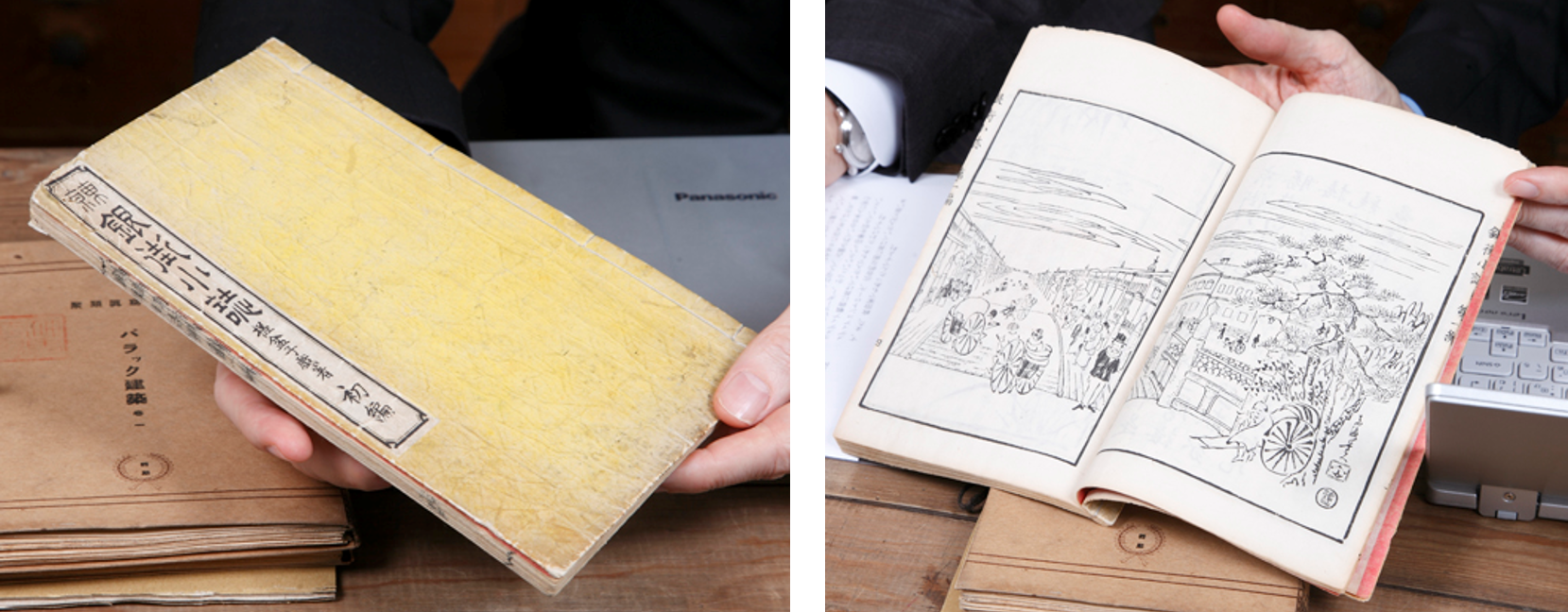
Photos: The cover (left) and a frontispiece (right) from Tokyo/Gingai Shōshi. What is now Ginza Chuō Avenue is drawn in perspective from Kyōbashi. The illustration shows the newly-established buildings of Ginza Rengagai (Ginza Bricktown) and a mix of Western and Japanese fashion of the people at the time (Source: Robert Campbell)
Toeda: After the completion of Ginza Rengagai, the area became a place for newspaper companies and the literati to gather and exchange information. In addition, with the increasing variety of cafes, restaurants, and fashion boutiques, Ginza seemed to have naturally lured writers, one of them being Yasunari Kawabata. His diary reveals that he often took walks around Ginza.
Campbell: I suppose the availability of good, cheap sake in Ginza in those days may have encouraged creating space for people to congregate. Doppo Kunikida set his short story “Gōgai [Extra Edition]” (1906) in a bar called Masamune Hall, where he himself used to go and sip on Nada no Ki-Ippon, a pure, high quality sake.
Toeda: It was also Ginza where café culture blossomed. Coffee was introduced quite early on, and there were many coffee houses and cafes in the area. I imagine Ginza at the time stood as a place for writers to casually meet and a melting pot of things people and information, encouraging writers to visit.
Campbell: While some writers enjoyed the lavishness of Ginza, others undoubtedly held conflicting feelings about the area. After being destroyed again in the devastating Great Kanto Earthquake of 1923, Ginza headed towards restoration with astonishing energy for the 1930 Reconstruction Festival of Tokyo. During the same period, many writers shared their sentiments about Ginza in their work.
In Kafu Nagai’s “Tsuyu no Atosaki [During the Rainy Season]” (1931), for example, an elderly man named Matsuzaki gazes at images of Ginza being rebuilt after the great earthquake, superimposing the scenes with images prior to the natural disaster. He casts a somewhat cold eye over the fact that an era has been brought to an end by the earthquake, without making judgements on whether the change is good or bad.
In Kosei Ando’s “Ginza Saiken [A Detailed Look at Ginza]” (1931), on the other hand, Ginza is described from the beginning as a despicable town, the embodiment of vanity. But reading further into Ando’s detailed look, we find it contains passionate reportage of a beautifully reconstructed Ginza. Ando used the earthquake as a way of leaving behind the Ginza he knew from his youth, publishing this book to make distinctions between the before and after and to express his complex feelings.
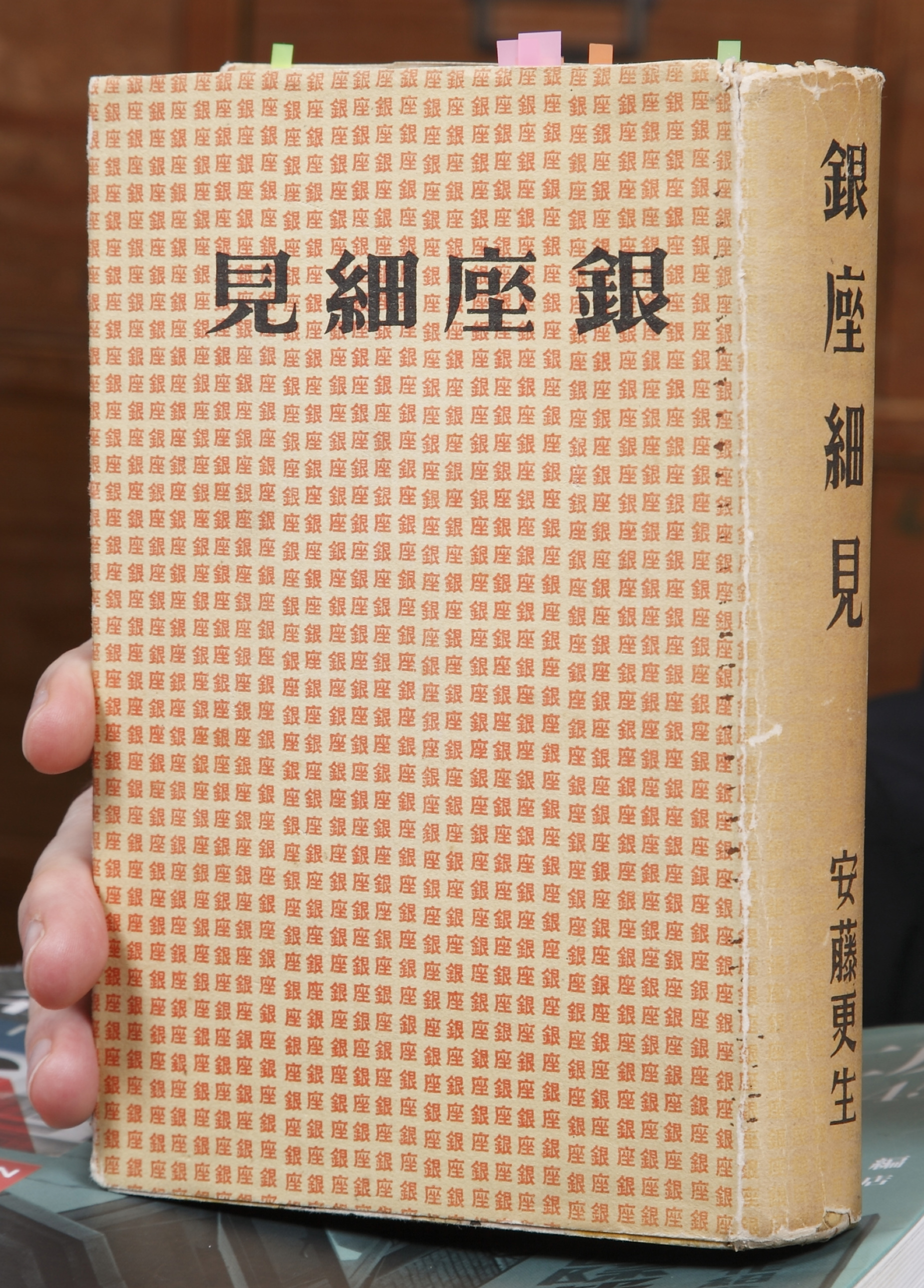
Photo: The cover of “Ginza Saiken.” The design contains densely packed rows of the kanji characters for Ginza (Source: Robert Campbell)
Toeda: After the Great Kanto Earthquake, Ginza developed more rapidly than ever before, and many literary works were produced at this time. Since the Meiji era, Asakusa had been Tokyo’s leading downtown district, but after the earthquake, Ginza became the more prosperous area. As you mentioned previously, this thriving, reconstruction period is one way or another related to the numerous novels published about Ginza.
At the same time, there were some novelists still writing about Asakusa. Japan’s first Nobel laureate in Literature, Yasunari Kawabata, for instance, used to visit both Ginza and Asakusa, but published his novel “Asakusa Kurenaidan [The Scarlet Gang of Asakusa]” in 1930. The serialized publication of this novel in the Tokyo Asahi Shimbun newspaper starting in December 1929 was one of the reasons why people began to take a renewed interest in Asakusa.

Photo: Kawabata, Yasunari. “Asakusa Kurenaidan [The Scarlet Gang of Asakusa].” Senseisha, 1930. Box Design by Kenkichi Yoshida. (Source: The Museum of Modern Japanese Literature, collection number: P0001016)
In the next session, the two professors will discuss the soundscape of Ginza.
Profiles
 Professor Robert Campbell
Professor Robert Campbell
Born in New York, Professor Robert Campbell graduated from University of California, Berkeley and earned a PhD in literature from the Department of East Asian Languages and Civilizations, Harvard University. He moved to Japan in 1985 as a research student in the Faculty of Humanities, Kyushu University, later joining the faculty as an assistant professor. He also served as associate professor at the National Institute of Japanese Literature and associate professor and later professor at the Graduate School of Arts and Sciences, the University of Tokyo. His specialization is Japanese literature from the Edo to Meiji period. His publications include “Robert Campbell no Shosetsuka Shinzui—Gendai Sakka Rokunin to no Taiwa [Dialogue With Six Contemporary Artists – Novelist Essence of Robert Campbell]” (NHK Publishing, 2012), “J-Bungaku—Eigo de Deai, Nihongo wo Ajiwau Meisaku 50 [J-Literature: Fifty Masterpieces to Encounter in English and Relish in Japanese]” (University of Tokyo Press, 2010), “Kanbun Shosetsu Shu [Meiji Novels Written in Classical Chinese]” (Iwanami Shoten, 2005), “Yomu Koto no Chikara―Todai Komaba Renzoku Kōgi [The Power of Reading―Lectures at Komaba, the University of Tokyo]” (Kodansha, 2004) and “Kaigai Kenbun Shu [A Collection of Observations from Abroad]” (co-writer, Iwanami Shoten, 2009). He is also active in the Japanese media where he utilizes his expertise in literature as a television host, news commentator, newspaper columnist, book reviewer and radio personality.
 Professor Hirokazu Toeda
Professor Hirokazu Toeda
Born in Tokyo in 1964, Professor Hirokazu Toeda graduated from Waseda University’s then School of Letters, Arts and Sciences before going on to study Japanese literature the Graduate School of Letters, Arts and Sciences, where he obtained his PhD in literature. He served as an assistant professor at Otsuma Women’s University before returning to Waseda University as an associate professor. He has served as a professor since 2003. He also frequently takes on collaborative posts overseas, such as visiting professor at UCLA in 2015 and visiting researcher at Columbia University in 2015 and 2016. Professor Toeda received the Utsubo Kubota Prize for Literature in 1994. His field of specialization is modern Japanese literature (literary modernism centered on the New Sensationalist school of Japanese writers, modern Japanese literature and the media and the interrelation between literature and censorship during the Allied occupation, etc.) His publications include “Shigeo Iwanami—Living Low, Thinking High” (Minerva Shobo, 2013), “Masterpieces Can Be Made—Yasunari Kawabata and His Works” (NHK Publishing Inc., 2009), “Censorship, Media and Literary Culture in Japan: from Edo to Postwar” (co-author and co-editor, Shinyosha, 2012), “Survey of Magazines during Occupation—Literary Edition, Volumes 1-5” (co-author/editor, Iwanami Shoten, 2009-2010), “The Cambridge History of Japanese Literature” (co-author, Cambridge University Press, 2015), and a commentary on Parts 1 and 2 of Riichi Yokomitsu’s “Ryoshu” (Iwanami Shoten, 2016).
The venue
Morioka Shoten, Ginza Branch
The dialogue took place at Morioka Shoten, Ginza Branch, located on the first floor of Suzuki Building in Ginza-Itchōme. Under the concept of “selling one book at a time,” this store adapts the unique business style of selling only one kind of book per week and creating elaborate displays, which attract many visitors from abroad as well.
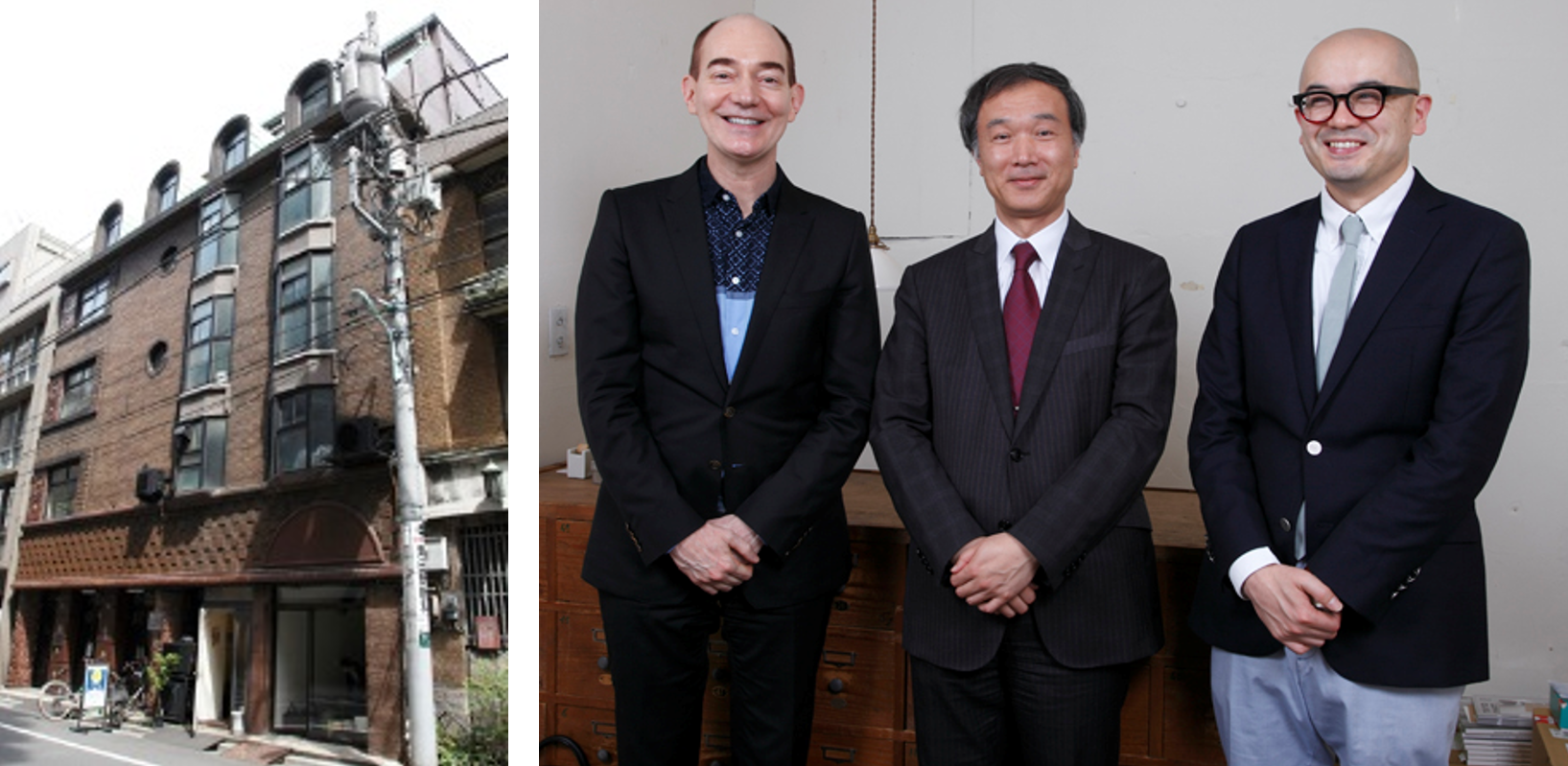
Photos, Left: Morioka Shoten Ginza Branch in Ginza-Itchōme Right: (From left) Prof. Robert Campbell, Prof. Hirokazu Toeda, and Morioka Shoten Manager Yoshiyuki Morioka

